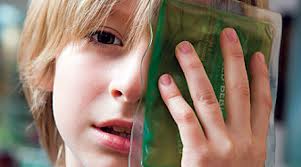Knowing how to provide first aid for eye injuries can help prevent possible irritation, further injury or even blindness.
The eyes are among the most delicate external organs of the body. Like other 
Be extra careful to avoid possible blinding eye injuries. Next to glaucoma, eye injuries rank second among the most common causes of vision loss. Traumas to the eyes due to blunt objects account for 37 percent eye injuries. Moreover, about 55 percent of eye injury victims involve people under 25. Every year, thousands of individuals receive eye care at emergency departments in the country. The eyes are very delicate even superficial abrasions can lead to infection or scarring, if not properly treated can possibly lead to impairment of vision.
In case of eye injury, it is important to seek prompt medical care. As mentioned earlier, even minor traumas to the eye can lead to serious consequences if not treated properly. To help minimize the risk of eye injuries and its complications, you should be able to recognize signs and symptoms of eye injury that include:
• Obvious wound
• Bloodshot eye or black eye (periorbital hematoma)
• Bleeding or drainage of clear fluids from the injured eye
• Vision changes or blurred vision
• Loss of vision (partial or complete)
In case of an eye injury, you should be careful not to aggravate the problem. Here are some DO’s and DON’Ts when it comes to first aid for eye injuries:
• DO NOT touch or rub the eyes.
• DO NOT attempt to remove embedded object or contact lens in the eye.
• DO NOT apply pressure over an eye with an embedded foreign object or an obvious wound or laceration.
• DO bandage the injured eye using an eye shield or a makeshift eye shield, such as taping a paper cup over the injured eye, especially if it will some time to obtain emergency medical help.
• DO bandage both eyes to prevent eye movements.
• DO irrigate the injured eye using running water if chemical gets to the eyes. Lower the head under running water and flush the eye for 15 minutes. Do not put anything else in the injured eye. If possible, bring the container of the chemical with you to the emergency department.
Here are other first aid treatments that you can do:
• Lay the victim on his back, rest his head on your knees and try to keep him still.
• If there is no eye shield, give the victim a paper cup and use to cover over the
injured eye. Instruct the victim to close both eyes and avoid moving them.
• Bring the victim to the nearest emergency department. If it is not possible, call 911 or your local emergency phone number.
Aside knowing first aid for eye injuries, you should also keep your eyes safe. Be sure to wear protective eyewear when engaging in eye hazards such as playing sports, using power tools, or working around flying debris.
